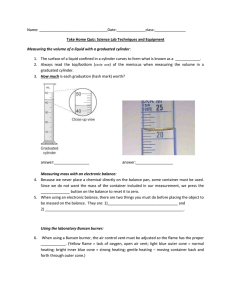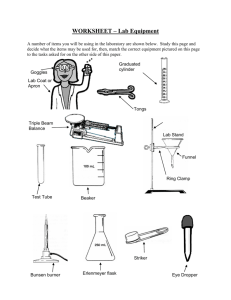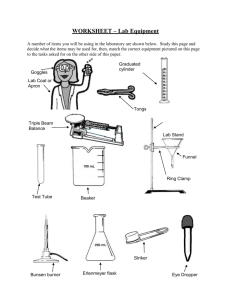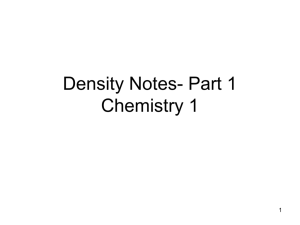Measuring the volume of a liquid with a graduated cylinder:
advertisement
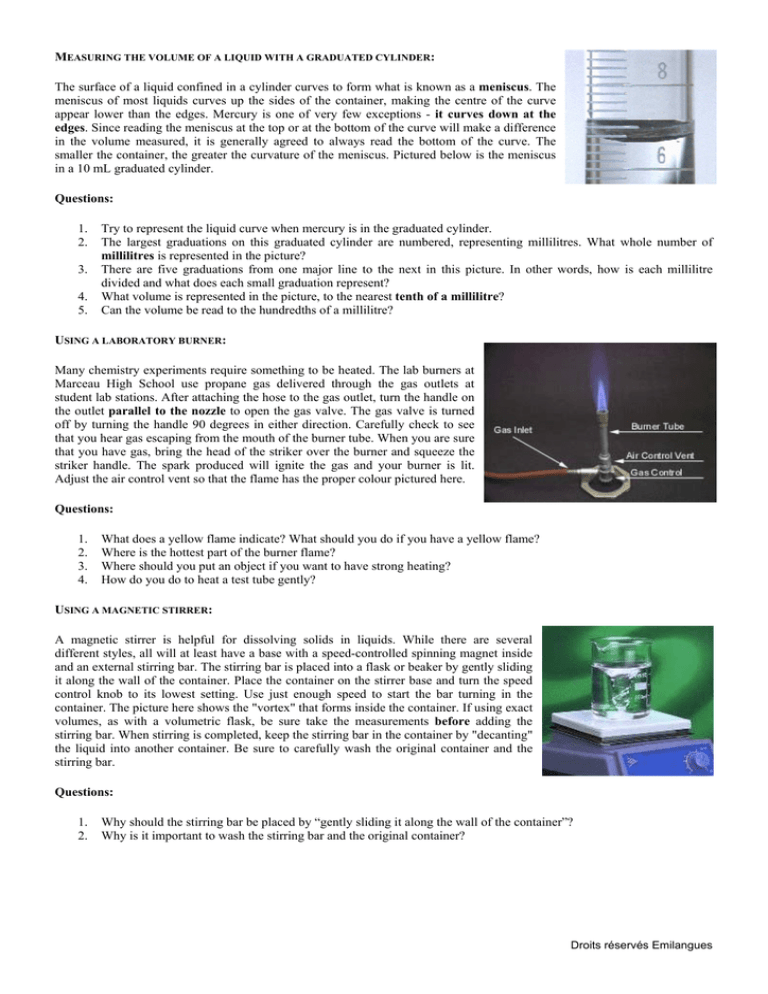
MEASURING THE VOLUME OF A LIQUID WITH A GRADUATED CYLINDER: The surface of a liquid confined in a cylinder curves to form what is known as a meniscus. The meniscus of most liquids curves up the sides of the container, making the centre of the curve appear lower than the edges. Mercury is one of very few exceptions - it curves down at the edges. Since reading the meniscus at the top or at the bottom of the curve will make a difference in the volume measured, it is generally agreed to always read the bottom of the curve. The smaller the container, the greater the curvature of the meniscus. Pictured below is the meniscus in a 10 mL graduated cylinder. Questions: 1. 2. 3. 4. 5. Try to represent the liquid curve when mercury is in the graduated cylinder. The largest graduations on this graduated cylinder are numbered, representing millilitres. What whole number of millilitres is represented in the picture? There are five graduations from one major line to the next in this picture. In other words, how is each millilitre divided and what does each small graduation represent? What volume is represented in the picture, to the nearest tenth of a millilitre? Can the volume be read to the hundredths of a millilitre? USING A LABORATORY BURNER: Many chemistry experiments require something to be heated. The lab burners at Marceau High School use propane gas delivered through the gas outlets at student lab stations. After attaching the hose to the gas outlet, turn the handle on the outlet parallel to the nozzle to open the gas valve. The gas valve is turned off by turning the handle 90 degrees in either direction. Carefully check to see that you hear gas escaping from the mouth of the burner tube. When you are sure that you have gas, bring the head of the striker over the burner and squeeze the striker handle. The spark produced will ignite the gas and your burner is lit. Adjust the air control vent so that the flame has the proper colour pictured here. Questions: 1. 2. 3. 4. What does a yellow flame indicate? What should you do if you have a yellow flame? Where is the hottest part of the burner flame? Where should you put an object if you want to have strong heating? How do you do to heat a test tube gently? USING A MAGNETIC STIRRER: A magnetic stirrer is helpful for dissolving solids in liquids. While there are several different styles, all will at least have a base with a speed-controlled spinning magnet inside and an external stirring bar. The stirring bar is placed into a flask or beaker by gently sliding it along the wall of the container. Place the container on the stirrer base and turn the speed control knob to its lowest setting. Use just enough speed to start the bar turning in the container. The picture here shows the "vortex" that forms inside the container. If using exact volumes, as with a volumetric flask, be sure take the measurements before adding the stirring bar. When stirring is completed, keep the stirring bar in the container by "decanting" the liquid into another container. Be sure to carefully wash the original container and the stirring bar. Questions: 1. 2. Why should the stirring bar be placed by “gently sliding it along the wall of the container”? Why is it important to wash the stirring bar and the original container? Droits réservés Emilangues A yellow flame is an indication of a lack of oxygen, meaning that the air vent needs to be opened. The hottest part of the burner flame is just at the top of the bright blue inner cone. Normal heating is done with an object at the top of the light blue outer cone, while strong heating is done with an object at the top of the bright blue inner cone. To heat a container gently, move the container back and forth through the outer cone. Droits réservés Emilangues
